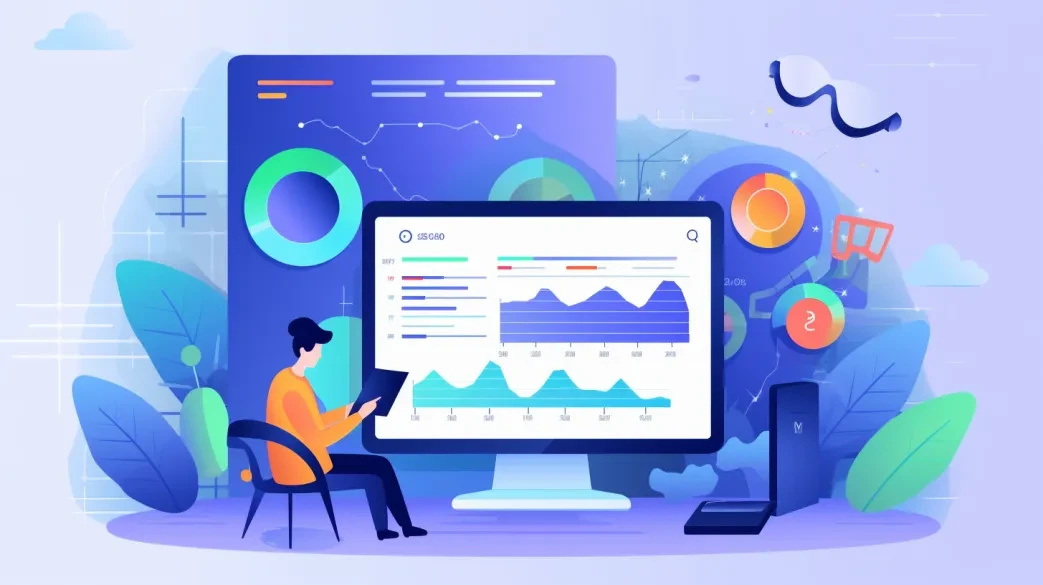Shopify SEO Optimization: The Key to E-commerce Success
In the fast-paced world of e-commerce, having a Shopify store is like owning a bustling shop on a digital high street. But, with so many stores vying for attention, how do you make sure that yours stands out?
The answer lies in Shopify SEO optimization – a vital tool to boost your online presence, attract more visitors, and ultimately, increase sales.
Table of Contents
Unlock the Secrets of Shopify's SEO Algorithm

Shopify SEO Fundamentals: An Overview
Before diving deep into the complex world of SEO, it’s crucial to grasp its basic principles. This section will provide a simple yet thorough understanding of SEO’s role in enhancing your Shopify store’s online presence.
Optimizing your Shopify store is key to ranking higher in search engine results pages (SERPs), making your products more visible to potential customers.
Optimizing for Google and other search engines is essential, as it increases the chances of your Shopify store being found by a wider audience.
Technical SEO for Shopify: Ensuring a Solid Foundation
Technical SEO forms the backbone of your optimization efforts. We’ll explore essential aspects like site structure, mobile responsiveness, and site speed, crucial for a smooth user experience and better search engine rankings.
Be cautious of automatically generated content or URLs in Shopify, as these may not always be SEO-friendly and could require manual optimization.
Use canonical tags to prevent duplicate content issues, informing search engines which pages are the primary ones to be indexed.
Use an image optimizer to enhance load times and SEO performance, as optimized images significantly contribute to the overall SEO health of your Shopify store.
Keyword Research for Shopify Stores: Unlocking Your Audience’s Language
Discover how to identify and leverage the keywords your potential customers are using. This section offers insights into effective keyword research strategies tailored for Shopify stores.
On-Page SEO Strategies for Shopify: Mastering Content Optimization
On-page SEO is all about content. Learn how to optimize your product descriptions, images, and meta tags to make your Shopify store more search engine friendly.
Optimize page titles with relevant keywords and compelling language to improve click-through rates from search engine results.
Craft compelling product descriptions that not only entice your customers but also include your target keywords, enhancing the SEO value of your Shopify product pages.
Incorporate internal links to guide visitors through your Shopify store, which aids in site navigation and distributes page authority throughout your site.
Shopify’s URL Structure: Navigating the Path to SEO Success
A well-crafted URL structure is a cornerstone of effective SEO. In Shopify, mastering the art of URL optimization means creating clear, concise, and keyword-rich paths that not only resonate with search engine algorithms but also provide a user-friendly experience.
This strategic approach to URL structuring can significantly boost your store’s visibility, guiding potential customers right to your digital doorstep and enhancing your overall SEO success.
Advanced Shopify SEO Techniques

Link-Building for Shopify Stores: Creating Connections
Link-building is not just about establishing links; it’s about forging valuable connections that elevate your Shopify store’s online presence.
This vital SEO strategy involves meticulously cultivating high-quality backlinks from reputable sources, enhancing your store’s authority and credibility.
It’s about building relationships with industry influencers, engaging in strategic content collaborations, and harnessing the power of social media to spread your brand’s reach.
Effective link-building drives organic traffic, improves search engine rankings, and establishes your store as a trusted name in the digital marketplace.
By focusing on creating genuine, meaningful connections, your Shopify store can enjoy a significant boost in visibility and customer trust, paving the way for long-term success and growth.
High-quality backlinks are instrumental in boosting your search engine ranking, making your store more visible to potential customers.
Leveraging Shopify Apps for SEO: Tools That Make a Difference
The Shopify ecosystem is rich with powerful apps designed to turbocharge your SEO efforts.
For instance, apps like ‘SEO Manager‘ allow for real-time feedback and easy optimization of your store’s SEO elements.
‘Plug in SEO‘ is another standout, offering comprehensive checks and fixes for common SEO issues.
Then there’s ‘Smart SEO,’ which automates the tedious task of meta tag generation and structured data handling, freeing up valuable time for other business areas.
By integrating these dynamic apps, you can streamline and enhance your SEO processes, ensuring your Shopify store not only meets but exceeds the ever-evolving standards of search engine optimization.
Content Marketing for Shopify SEO: Beyond Product Pages
Content marketing in the realm of Shopify SEO transcends beyond just product pages.
It’s an artistic blend of storytelling and strategic marketing, aimed at captivating your audience with engaging, valuable content that resonates beyond the realm of mere transactions.
This holistic approach involves crafting informative blog posts, insightful how-to guides, and compelling narratives that highlight your brand’s unique voice and expertise.
By infusing your content with relevant keywords and optimizing for search engines, you not only enhance your Shopify store’s SEO but also build a deeper, more meaningful connection with your audience.
It’s about creating a content ecosystem that not only informs and educates but also inspires and entertains, turning casual visitors into loyal customers and brand advocates.
This broader vision of content marketing paves the way for a more enriched and sustained digital presence, driving both traffic and engagement to new heights.
Mobile SEO for Shopify: Catering to the On-the-Go Consumer
In today’s digital landscape, mobile SEO is not just an option, but a necessity. For Shopify stores, optimizing for mobile means ensuring that your site is responsive, fast-loading, and user-friendly on smaller screens.
This focus caters to the growing number of consumers who shop on-the-go, using their smartphones. By enhancing your mobile SEO, you provide a seamless shopping experience, which not only boosts your search engine rankings but also significantly increases customer satisfaction and engagement.
This dedication to mobile optimization is key to capturing the ever-mobile customer and staying ahead in the competitive e-commerce arena.
Shopify and Local SEO: Connecting with Local Customers
Local SEO is a game-changer for physical Shopify stores, bridging the gap between online presence and local customers.
By optimizing your Shopify site for local searches, you can capture the attention of a nearby audience, driving foot traffic and fostering community connections.
This involves tailoring your SEO strategies with local keywords, engaging with local online directories, and ensuring your store’s location and contact information are prominently and accurately displayed.
Effectively leveraging local SEO transforms your Shopify store into a familiar and preferred choice for those in your vicinity, fostering a loyal customer base right in your own neighborhood.
Harnessing Structured Data: A Game-Changer for Shopify SEO
Implementing structured data in your Shopify store is like providing a roadmap to search engines, enabling them to effortlessly comprehend and showcase your content.
This advanced SEO technique is particularly crucial for product listings and customer reviews. By structuring your data, you not only enhance the visibility of your products in search results but also enrich the user experience with more informative and attractive displays.
This level of clarity and detail in your store’s presentation can dramatically elevate its appeal both to search engines and potential customers, turning casual browsing into actual sales.
Practical Insights and Tips for Shopify SEO

21 Common Shopify SEO Mistakes to Avoid
Learn about common pitfalls in Shopify SEO and how to steer clear of them to make sure your store’s SEO strategy is effective and efficient.
- Ignoring Mobile Optimization: Not making sure your Shopify store is mobile-friendly can significantly impact user experience and search rankings.
- Overlooking Page Loading Speed: Slow-loading pages can lead to higher bounce rates and lower search engine rankings.
- Neglecting Keyword Research: Failing to use relevant and targeted keywords can result in poor visibility and traffic.
- Using Duplicate Content: Having the same content across multiple pages can harm your SEO efforts.
- Overusing Keywords: Keyword stuffing can negatively affect your site’s readability and ranking.
- Skipping Alt Text for Images: Not adding descriptive alt text to images misses an opportunity for better ranking and accessibility.
- Inconsistent URL Structures: Irregular URL patterns can confuse search engines and users.
- Not Using Shopify’s SEO Features: Shopify offers various built-in SEO tools that are often underused.
- Forgetting to Set Up 301 Redirects: Not redirecting old URLs to new ones can lead to 404 errors and lost traffic.
- Overlooking Meta Descriptions: Missing or poorly written meta descriptions can reduce click-through rates from search results.
- Ignoring Local SEO: If you have a physical location, neglecting local SEO can mean missing out on nearby customers.
- Inadequate Link Building: Not acquiring high-quality backlinks can limit your website’s authority and ranking.
- Not Watching SEO Performance: Failing to track and analyse your SEO progress can prevent you from making necessary improvements.
- Not Updating Content Regularly: Stale content can reduce your site’s relevance and engagement.
- Underestimating Blogging: Not leveraging a blog to add fresh, relevant content can be a missed SEO opportunity.
- Poor Site Navigation: A confusing navigation structure can hinder user experience and site crawlability.
- Not Using Structured Data: Skipping structured data like schema markup can mean missing enhanced SERP features.
- Lacking Social Media Integration: Not integrating social media can reduce your store’s online presence and engagement opportunities.
- Not Addressing Broken Links: Broken links can harm the user experience and your site’s credibility.
- Disregarding Customer Reviews: Not including or encouraging customer reviews can miss enhancing trustworthiness and content freshness.
- Ignoring HTTPS Security: Not using HTTPS security can negatively impact your site’s trustworthiness and search engine rankings. Search engines favour secure websites and are essential for protecting user data, especially in e-commerce.
Avoiding these common mistakes can significantly enhance your Shopify store’s SEO performance, leading to better visibility, more traffic, and increased sales.
Shopify SEO Checklist: Your Roadmap to Optimisation
This handy checklist will make sure you’ve covered all essential aspects of Shopify SEO optimisation.
Keyword Research
- Identify primary keywords for your niche.
- Research long-tail keywords.
- Analyze competitor keywords.
- Use keyword research tools.
- Update keywords periodically.
On-Page SEO
- Optimize page titles with keywords.
- Use engaging meta descriptions.
- Implement header tags (H1, H2, H3).
- Optimize product descriptions.
- Include alt text in images.
- Use SEO-friendly URL structures.
- Implement breadcrumb navigation.
- Optimize content for featured snippets.
- Internal linking between pages.
- Implement schema markup.
Technical SEO
- Ensure mobile responsiveness.
- Improve page loading speed.
- Use SSL for website security.
- Create an XML sitemap.
- Set up 301 redirects for broken links.
- Fix crawl errors.
- Implement canonical tags.
- Use robots.txt file correctly.
- Optimize pagination.
- Check for duplicate content.
Content Strategy
- Create high-quality, original content.
- Regularly update blog with relevant posts.
- Use multimedia content (videos, infographics).
- Implement content hierarchy.
- Utilize LSI keywords in content.
- Guest blogging on relevant sites.
- Keep content length appropriate.
- Use engaging and relevant titles.
- Provide valuable and informative content.
- Update old content.
Link Building
- Acquire high-quality backlinks.
- Monitor and remove bad links.
- Use natural link building techniques.
- Perform competitor backlink analysis.
- Engage in community and forum sites.
- List in relevant directories.
- Utilize influencer partnerships.
- Write testimonials for backlinks.
- Monitor link growth.
- Use social media for link building.
Local SEO
- Optimize for local keywords.
- Create a Google My Business account.
- Get listed in local directories.
- Encourage customer reviews.
- Use location-specific pages.
- Optimize for ‘near me’ searches.
- Use local schema markup.
- Local link building.
- Monitor local search rankings.
- Engage with local online communities.
User Experience
- Ensure easy navigation.
- Optimize for voice search.
- Use clear calls to action.
- Ensure website accessibility.
- Implement chatbots for customer service.
- Use consistent branding.
- Optimize for user engagement.
- Conduct user experience testing.
- Reduce bounce rate.
- Create a responsive design.
Analytics and Tracking
- Set up Google Analytics.
- Monitor traffic sources.
- Track conversions.
- Analyze page performance.
- Set up goals in Google Analytics.
- Use Google Search Console.
- Regularly review analytics data.
- Monitor keyword rankings.
- Track and analyze backlink profile.
- Utilize heatmaps for user behavior.
E-commerce SEO
- Optimize category pages.
- Use unique images for products.
- Enable customer reviews on products.
- Optimize checkout process.
- Implement structured data for products.
- Create compelling product descriptions.
- Optimize for Google Shopping.
- Use dynamic remarketing.
- Offer promotions and discounts.
- Manage out-of-stock product pages.
Social Media and SEO
- Integrate social sharing buttons.
- Regularly post on social media.
- Optimize social media profiles.
- Engage with followers.
- Use hashtags effectively.
- Share website content on social platforms.
- Monitor brand mentions.
- Collaborate with social media influencers.
- Leverage social media ads.
- Track social media referral traffic.
Tracking Your Shopify Store’s SEO Performance
Tracking the SEO performance of your Shopify store is crucial for understanding its impact and guiding your ongoing strategy.
This vital process involves using top-notch SEO tools that provide detailed insights into your website’s performance, user behaviour, and search engine rankings.
Leveraging tools like Google Analytics and Google Search Console offers a wealth of data, from tracking visitor traffic and behaviour patterns to analyzing keyword performance and click-through rates.
Adva ced platforms such as SEMrush or Ahrefs can delve deeper, offering competitive analysis, backlink tracking, and comprehensive site audits.
Moz Pro is another invaluable resource for tracking site rankings and uncovering SEO opportunities.
By regularly analysing this data, you can make informed decisions, identify trends, pinpoint areas for improvement, and adapt your SEO strategies for maximum effectiveness.
Consistently tracking and monitoring with these top SEO tools transforms data into actionable insights, propelling your Shopify store toward peak performance and optimal visibility in the ever-evolving digital landscape.
Expanding Your Reach with Shopify SEO

Understanding Shopify’s SEO Algorithm
Grasping the intricacies of Shopify’s SEO algorithm is pivotal for any store owner aiming to thrive in the digital marketplace.
This algorithm is a complex, ever-evolving system designed to rank online stores based on various factors that determine their relevance and authority. It’s about understanding how Shopify interprets and values different aspects of your store, from site structure and keyword usage to user experience and content quality.
Delving into this algorithm requires a keen eye for detail and a strategic approach to SEO practices. It involves staying updated with the latest trends, algorithm updates, and best practices in e-commerce SEO.
By mastering the nuances of Shopify’s SEO algorithm, you can tailor your optimization strategies to align with these criteria, making sure that your store not only meets but exceeds the expectations of this digital arbiter.
This deep understanding enables you to fine-tune every element of your site, turning your Shopify store into a well-oiled machine, primed for top search engine rankings and online success.
Effective Use of Shopify Analytics for SEO
Leveraging Shopify Analytics for SEO is like navigating a treasure map where data points are the clues leading to the ultimate prize of enhanced store performance.
This powerful tool offers a wealth of insights, allowing you to dissect every facet of your store’s online interaction and consumer behaviour. By effectively using Shopify Analytics, you can track which products resonate with your audience, understand the customer journey, and see how changes to your store impact visitor engagement and conversions.
Dive deep into the world of visitor traffic analysis to identify the sources bringing in the most valuable customers. Analyse page views, bounce rates, and time spent on site to gauge content effectiveness and user engagement.
Shopify Analytics also lets you track the performance of different keywords, giving you a clear picture of what’s driving traffic to your site.
Understanding shopping and purchasing behaviours through this tool is invaluable. You can track which products are viewed most, cart abandonment rates, and ultimately, what leads to a sale. This insight is crucial for refining your SEO strategy, making sure you’re not just driving traffic, but attracting the right traffic that converts.
The beauty of Shopify Analytics lies in its ability to transform raw data into actionable insights. Whether it’s tweaking your SEO tactics, enhancing product descriptions, or restructuring your site layout, these insights allow you to make informed decisions that align with your SEO goals.
Shopify Analytics isn’t just a reporting tool; it’s the guiding light for your SEO journey, illuminating the path to online success.
Enhancing Shopify SEO Through Design and User Interface
Design Your Shopify Store for Peak SEO Performance
The design of your Shopify store plays a crucial role in SEO. A well-designed store not only provides a better user experience but also aligns with SEO best practices. Discover the design elements that impact your store’s SEO and how to optimise them.
Master the Art of Image Optimization for Speedy Loading
Images are central to any Shopify store, but if not optimised, they can slow down your site. Learn about compression techniques and image formats that reduce load times while maintaining visual quality, thus boosting your SEO.
Lay a Robust Foundation for Your Shopify Store's SEO Journey
Setting Up Your Shopify Store for SEO Success
Starting with a strong SEO foundation is crucial. This section covers the initial steps and settings in Shopify that are essential for optimal SEO performance.
Enhance Your SEO Arsenal with Essential Shopify Integrations
While Shopify offers many built-in tools, integrating with external SEO tools like Google Analytics and Ahrefs can enhance your strategy. Learn which tools offer the most value and how to integrate them with your Shopify store.
Advanced Shopify SEO Strategies

Stay Ahead: Optimise Your Shopify Store for Voice Search
In the rapidly evolving digital landscape, optimising your Shopify store for voice search isn’t just an enhancement; it’s a necessity to stay ahead.
Voice search optimisation is a big change in how people use technology. It makes shopping easier and more like having a conversation. To get better at this, you need to learn about how computers understand language. You also need to understand how devices like smartphones, smart speakers, and virtual assistants understand and answer questions from users.
To effectively optimise for voice search, your Shopify store needs to focus on conversational keywords and phrases that mirror how people naturally speak.
To make it easier for customers to find your products, use long-tail keywords in your product descriptions, blog posts, and FAQs. These keywords should match the words customers use when asking questions.
It’s important to make sure that your store’s information answers common questions about your products. This can help your store show up more in voice search results.
Using structured data, also known as schema markup, is very important. It gives search engines detailed information about your products and services. This helps voice search algorithms find and show your store’s information correctly.
Local SEO takes on added importance in voice search optimisation. Many voice searches are local in nature, so making sure your Shopify store is optimised for local SEO can capture this audience effectively. This includes maintaining up-to-date and detailed local business listings, encouraging customer reviews, and including location-specific keywords in your SEO strategy.
Optimising your Shopify store for voice search is about anticipating and adapting to the future of e-commerce. This is a chance to connect with your customers in a personal and direct way. It’ll make their shopping experience better and put your brand at the forefront of the technological revolution.
The use of voice search is becoming more popular and advanced. It’s important for your store to be ready for these changes to stay competitive in the online marketplace.
Harness AI & Machine Learning for Cutting-Edge SEO Tactics
Artificial intelligence and machine learning are reshaping SEO. Explore how these technologies can be leveraged in Shopify to predict trends, understand customer behaviour, and optimise your SEO strategies more effectively.
Sustainable SEO Practices for Long-Term Success
Embrace Ethical SEO Practices for Sustainable Shopify Growth
In the world of SEO, shortcuts can be tempting, but they often lead to penalties. This part emphasises the importance of white-hat, ethical SEO practices that make sure long-term success for your Shopify store.
Foster a Vibrant Community to Amplify Your SEO Efforts
A loyal community can be a powerful tool for SEO. Learn how to build and engage a community around your Shopify store, leveraging social media, forums, and other platforms to boost your store’s visibility and credibility.
Leveraging Shopify SEO for Business Growth

The Impact of SEO on Shopify Sales: A Direct Connection
Discover how effective SEO directly contributes to increased sales and revenue for your Shopify store.
By improving SEO, you can increase organic traffic, which is crucial for sustainable long-term growth and sales on your Shopify store.
Shopify SEO and User Experience: A Dual Benefit
Explore how SEO not only improves your store’s visibility but also enhances the overall user experience for your visitors.
Future-Proofing Your Shopify Store with SEO: Staying Ahead of the Curve
Learn how to keep your Shopify store’s SEO strategy up-to-date with the latest trends and algorithm updates.
Maximising Your Shopify Store's Potential with SEO
In conclusion, Shopify SEO optimization isn’t just a necessity but a powerful tool to unlock your store’s full potential.
By implementing the strategies and insights provided in this guide, you can significantly enhance your store’s visibility, attract more traffic, and boost your sales.
Enhancing the user experience on your Shopify store not only keeps customers engaged but also positively impacts your SEO by reducing bounce rates.
Remember, SEO is a continuous process, and staying updated with the latest trends and techniques is crucial for ongoing success.
The journey of optimising your Shopify store for better visibility and higher rankings in search engines is an ongoing process that yields significant benefits.
With dedication and the right approach, your Shopify store can rise above the competition and achieve remarkable growth.
Elevating Your E-Commerce Game: Shopify and SEO FAQs

Does Shopify Offer SEO Optimization?
Absolutely! Shopify provides built-in SEO features like customizable headlines, title and meta description, and meta tags, helping your store rank better in search engine results.
Is Shopify Any Good for SEO?
Yes, Shopify is excellent for SEO. It offers a range of SEO-friendly features designed to optimise online stores for better visibility and ranking.
Do Shopify Tags Improve SEO?
Shopify tags can enhance SEO by organising content and improving site navigation, which search engines favour for ranking purposes.
How Do I Get My Shopify Store to Rank High in Search Engines?
To rank high, focus on robust SEO strategies such as keyword optimisation, quality content creation, improving site speed, and earning credible backlinks.
Is WordPress or Shopify Better for SEO?
Both have strengths, but Shopify’s user-friendly interface and built-in tools make it a strong contender, especially for those less technical.
Is Shopify as Good as WordPress for SEO?
Shopify matches WordPress in SEO capabilities with its simplified optimization tools, making it a practical alternative, especially for e-commerce.
Is Shopify or Wix Better for SEO?
Shopify often edges out Wix for SEO in e-commerce because of its specialised features and tools designed specifically for online stores.
Is Shopify More SEO-Friendly than WooCommerce?
Shopify is known for its user-friendly SEO capabilities, while WooCommerce requires more hands-on effort but offers more customization.
Is Google Ads Worth It for Shopify?
Google Ads can be a valuable investment for driving immediate traffic to your Shopify store, complementing your long-term SEO efforts.
How Do I Optimize My Shopify Store?
Optimize your store by using Shopify’s SEO tools, conducting keyword research, optimising product descriptions, and improving site speed.
How Do I Index My Shopify Store on Google?
To index your store, submit your sitemap to Google Search Console and ensure your store is search engine friendly with Shopify’s SEO features.
Does Google Optimize Work with Shopify?
Google Optimize is no longer available for A/B testing. But there are free alternatives on the market, such as VWO.
Is Shopify More SEO-Friendly than WooCommerce?
Shopify is generally considered more user-friendly for SEO compared to WooCommerce, offering a streamlined approach ideal for those new to SEO.
Is Shopify or Wix Better for SEO?
For e-commerce, Shopify tends to offer more robust SEO tools and capabilities than Wix, making it a preferred choice for online retailers.
Is Shopify 2.0 Better for SEO?
Shopify 2.0 brings enhanced SEO features, offering greater flexibility and optimization capabilities to improve your store’s search engine rankings.
How Long Does It Take to See Results from Shopify SEO Optimization?
SEO is a long-term game. It typically takes several months to see significant results from Shopify SEO optimization, as search engines gradually recognise and reward your efforts.
Can Shopify SEO Optimization Help in Competing Against Larger Brands?
Yes, effective SEO optimization on Shopify can level the playing field, allowing smaller stores to compete with larger brands by improving visibility and credibility.
What Is the Most Important Aspect of Shopify SEO to Focus On for a New Store?
For new stores, the focus should be on keyword research and on-page SEO. This includes optimising product descriptions, titles, and images to align with search queries.
How Often Should I Update My Shopify Store’s SEO Strategy?
SEO is dynamic, so it’s wise to review and update your strategy quarterly. Stay abreast of the latest trends and algorithm changes to keep your store competitively ranked.
What Role Do Customer Reviews Play in Shopify SEO?
Customer reviews significantly enhance SEO by providing fresh, keyword-rich content and improving trust and credibility, which are key factors in search engine rankings.
Is It Necessary to Hire an SEO Expert for My Shopify Store?
While not always necessary, hiring an SEO expert can be beneficial, especially for store owners who lack the time or expertise to optimise and stay updated with SEO trends.




![How Good Is Shopify Seo? Boost Your Traffic And Sales [2024] digital marketing expert working on their Shopify website](https://digi-business.co.uk/wp-content/uploads/2023/11/digital-marketing-expert-working-on-their-Shopify-website.webp)





One Response